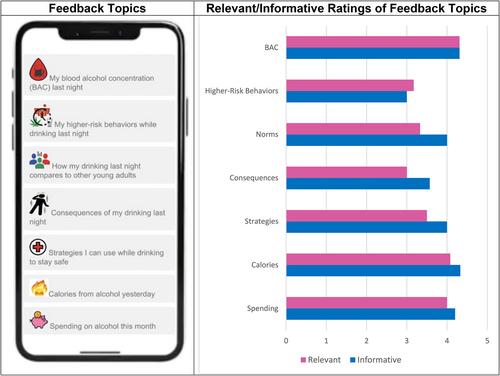Young adults drink heavily and experience negative alcohol consequences. To capitalize on mornings after drinking as an optimal time to intervene, we developed a novel, theory-based personalized feedback intervention (PFI) called Alcohol Feedback, Reflection, and Morning Evaluation (A-FRAME), to reduce heavy drinking. An initial prototype was refined via feedback from college students who drink heavily. The goal of the present study was to conduct an open trial to establish feasibility and acceptability of the refined PFI.
The refined PFI was delivered for 4 weeks to 18 heavy-drinking young adults (Mage = 22.61, 44% women, 66.7% White, 27.8% Black, 16.7% Asian, 5.6% Native American/Alaskan Indian, 22.2% Hispanic/Latino). Participants completed a goal-setting procedure, followed by 28 daily surveys. Surveys indicating prior-day drinking were followed by the option to view personalized feedback (e.g., goal attainment, blood alcohol concentration [BAC], peer norms, protective behaviors). Aggregated feedback was also delivered at the 14- and 28-day marks. Participants completed a post-test acceptability survey and individual interviews to inform further refinement.
The response rate to daily surveys was 93.8% and all participants completed study procedures, demonstrating feasibility. Daily feedback was reviewed about half (45.5%) of the time it was offered (i.e., following drinking days). Biweekly feedback was viewed 50% and 56% of the time at 14- and 28-day marks, respectively. Other benchmarks for acceptability were supported by survey and interview results.
Open trial results support the feasibility and acceptability of this theory-based intervention for heavy-drinking young adults. A planned randomized controlled trial will evaluate efficacy.


